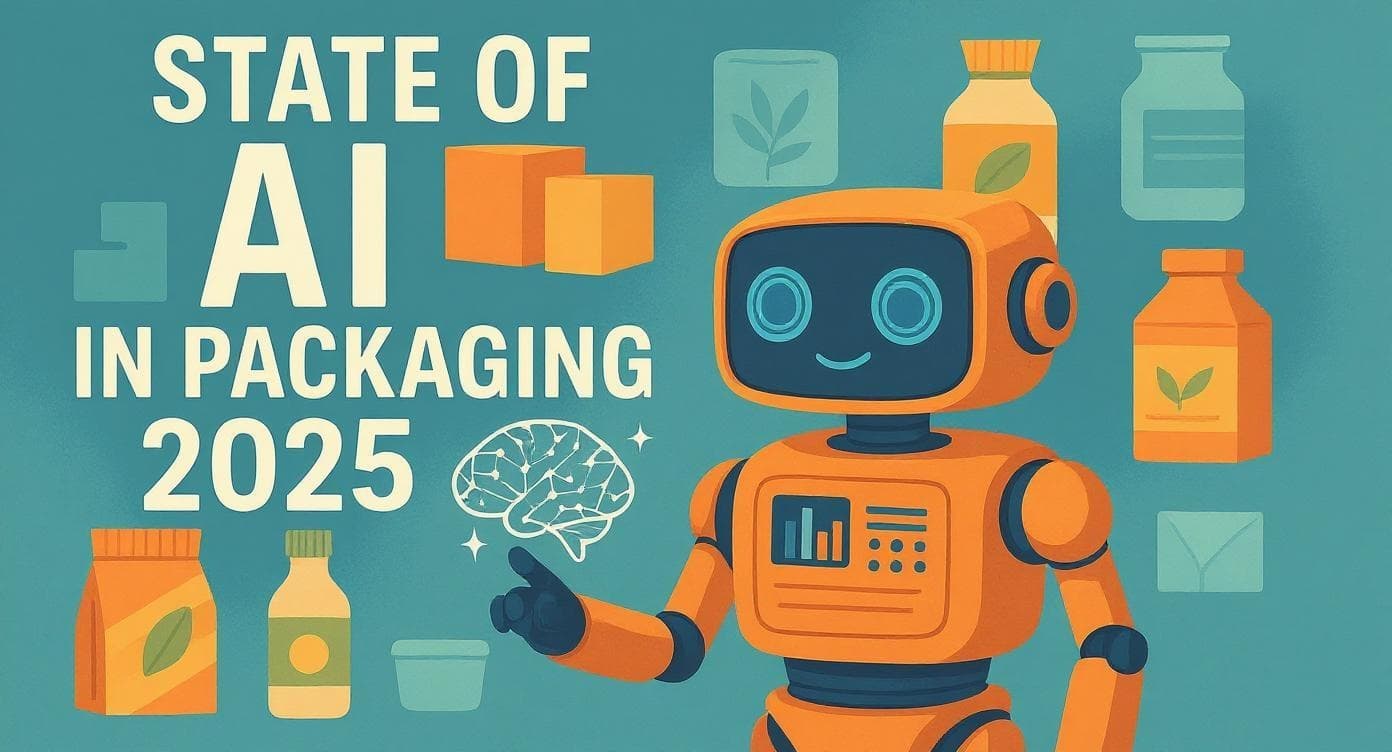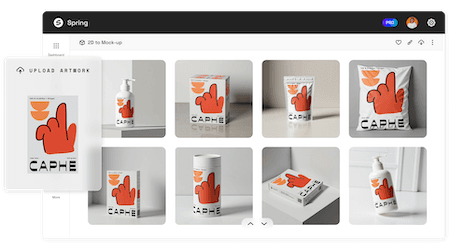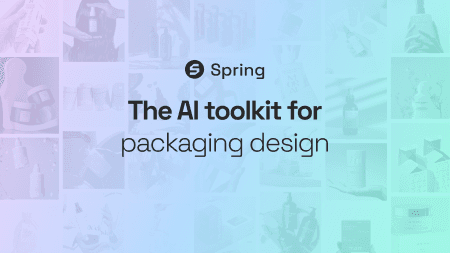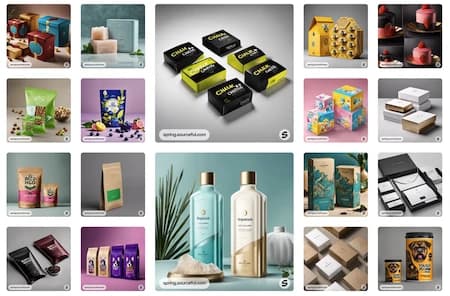Blog PostCreative packaging design: where to begin
- Design
- Innovation
Cameron MacinnesSeptember 28, 2021 - 7 min read

What is packaging design?
Packaging design is the process of creating packaging that's both functional and appealing. It combines visual design and product design, which encompasses everything from brand visuals to packaging structure and usage.
There's a lot to consider. So putting a structure in place before you start designing packaging can help keep you focused. The process most often used for this is design thinking. Tim Brown, Executive Chair of IDEO, defines design thinking as a human-centred approach to innovation that considers people's needs and behaviours, as well as the possibilities of technology or commerce. Each stage includes different but related activities that together form the right conditions for innovation.
Benefits of packaging design
Good packaging design plays a pivotal role in boosting brand recognition, delivering a great unboxing experience and keeping your product safe. Well-designed packaging, for example, is the best way to keep your brand front and centre after someone has placed an order, which is especially important for e-commerce brands. And it’s good packaging design that makes sure your brand, messaging and values are communicated clearly. Over time, this can create brand loyalty, turning first-time buyers into long-lasting fans.
Good packaging design also is the foundation of protecting your product and safeguarding it from the trials of transit, including physical damage, contamination and tampering, all to ensure it reaches your customer in perfect condition. Without this, you risk damaged products, increased returns and unhappy customers. So, effective packaging design is not just something that happens before your packaging arrives but a strategic investment that can lead to significant returns.
Answer the why
Before you start actually designing any packaging, it's important to think about your vision. Why are you designing this packaging? What problem are you solving? Who has this problem? What do you want to achieve? You need to understand what you're trying to build and why.
It might be that you want to design a more durable shipping box, improve the unboxing experience of your mailer box or move towards more sustainable packaging. Or it might be something else. Defining your vision will help to make the next phase easier: aligning your design with your vision.
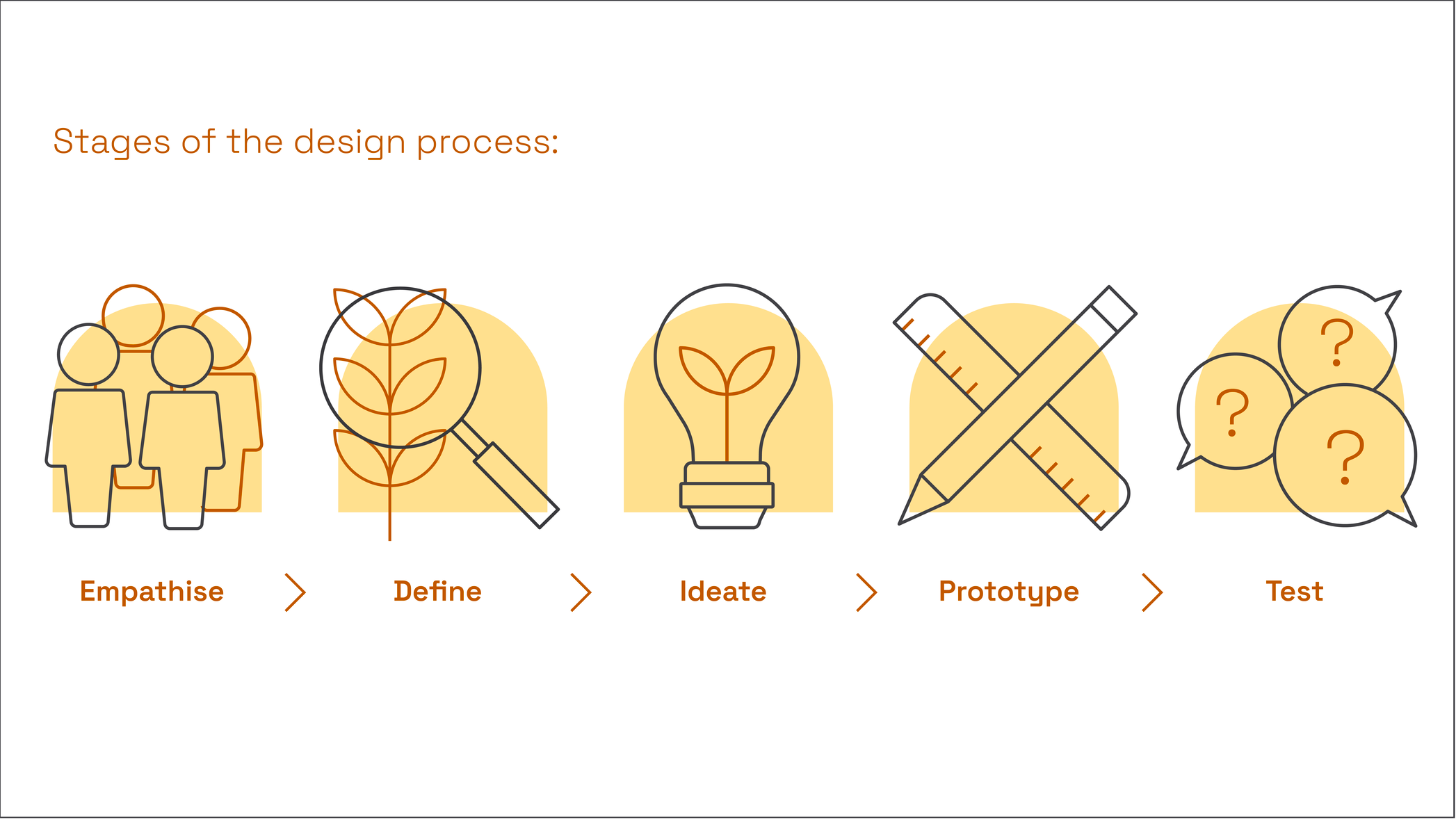
1. Empathise: product market research
The cornerstone of the design thinking process is empathy, which involves a deep understanding of your customers. This critical step allows you to gain valuable insights into your customers' motivations, needs, and values. These insights are instrumental in creating a packaging design that resonates with their preferences and expectations.
In 2020, for example, Amazon revolutionised their packaging box design based on extensive customer research. Their research revealed that a large number of their customers either repurposed or reused the packaging at home. Amazon harnessed these insights to launch a new, eco-friendly packaging box design as part of their "Less Packaging, More Smiles" initiative. These innovative designs for boxes not only provided information on recycling methods but also featured a QR code that offered instructions for creating fun cardboard projects like a rocket or a pet fort. This initiative is a prime example of Amazon's ability to empathise with their customers, understand their needs, and respond with a packaging design that meets those needs.
By diving into your customers' behaviours, emotions, actions, and values, you can gather invaluable data. This information can then be utilised to shape your packaging design strategy, ensuring it aligns with your customers' needs and preferences, ultimately leading to a better customer experience.
2. Define: what problems need fixing?
Once you've gathered customer insights, you can start to define your customer's point of view and define what problem needs to be addressed.
Foundation, one of Manchester’s largest independent coffee shops, noticed that around 1% of their customers would bring a reusable KeepCup when they ordered coffee and the rest would use takeaway cups. These were then thrown in the bin. Their response? Foundation switched their branded coffee cups to be compostable. By observing their customers' actions — and the values they represented — they were able to adapt their packaging accordingly.
This stage is key for identifying what you want your packaging to address and achieve. In other words, what function does your packaging need to fulfil, and what features will support that. If, for example, you have a heavy product, durability and strength will be essential. Or if you have a product with a high return rate, packaging that can be returned easily by customers may be important.
3. Ideate: innovative packaging design
The ideation stage is where your team can get creative. Now that you've defined the function of your packaging, you need to find solutions to achieve it. During this stage, it’s also critical to validate any design assumptions.
Remember to consider the outside and inside of your packaging design. The inside includes the packaging components that keep your product safe, such as custom inserts or tissue paper.
There are a lot of techniques that can help with ideation, including sketching and storyboarding. The former involves sketching out aspects of your design to see what it will look like. And storyboarding involves outlining the user experience. It helps you understand the overall journey of your packaging from when it leaves the warehouse to when it arrives at your customer's doorstep. You can also use software to create photo-realistic renderings and animations of your ideas. Programmes such as Adobe, Solidworks or Cinema4D offer free trials for those who want to experiment.
This stage is an opportunity for you to deep dive into your packaging. Do research. Understand any limits in manufacturing and find out how durable different materials are, how they interact with inks, or if they're suitable for a specific function. You will also need to think about how you want your packaging to look visually. If you have multiple packaging components, you may want to ensure they're visually aligned.
This was the case for Fenton, a B Corp luxury jewellery brand. Fenton decided to overhaul their packaging to make it both luxurious and sustainable. It took multiple iterations before a moulded pulp insert was created to bring together all the packaging components. They also tested over 40 fabrics to replace the animal leather and suede of their original ring box. The final material was vegan, and the colours and textures complemented the Fenton brand. The result was a dramatic improvement in the unboxing experience for their customers.
4. Prototype and test: mockups and Figma
The final stage of designing packaging is to prototype your packaging design ideas and test them. Here you can build a mock-up of your ideas. This could be drawn, built out of cardboard or created using tools such as Figma.
Once you've built a prototype you can test it. It's important to get your team and customers involved and to be open to different perspectives. This stage is about different users' experiences with your ideas. It allows you to gain feedback and make changes to your packaging before moving forward with a final design. Keeping your customers involved throughout the process is also a nice way of keeping them connected.
The aim of this stage is to start with a lot of ideas and then distil these into a final solution. There will always be multiple iterations of a design before it's finalised, meaning you may go back and forth between ideating and prototyping before you get to a solution. This is an investigative journey so iterations are necessary. You may find what you thought was right at the start isn't always the best solution, so it's okay if your vision changes.
Blue Moon Brewing Co., a Belgian-style white beer, tested several prototypes when they were designing packaging to celebrate their twenty-year anniversary. The first prototype had a structure that revealed the beer bottle using a folding carton. Another included a folding carton design with a sliding feature. After testing the prototypes and gathering feedback, Blue Moon created a final packaging design that blended the two.
The takeaway
Having a structure in place allows you to define both why you're designing packaging and how you're going to do it. Design thinking is one such structure. And whilst there are different stages to design thinking, you can see them as a series of helpful, creative spaces that encourage innovation, rather than defined steps you have to follow.
The result is a better understanding of your brand and your customers, better packaging designs, lower risks and costs, and more employee collaboration.



